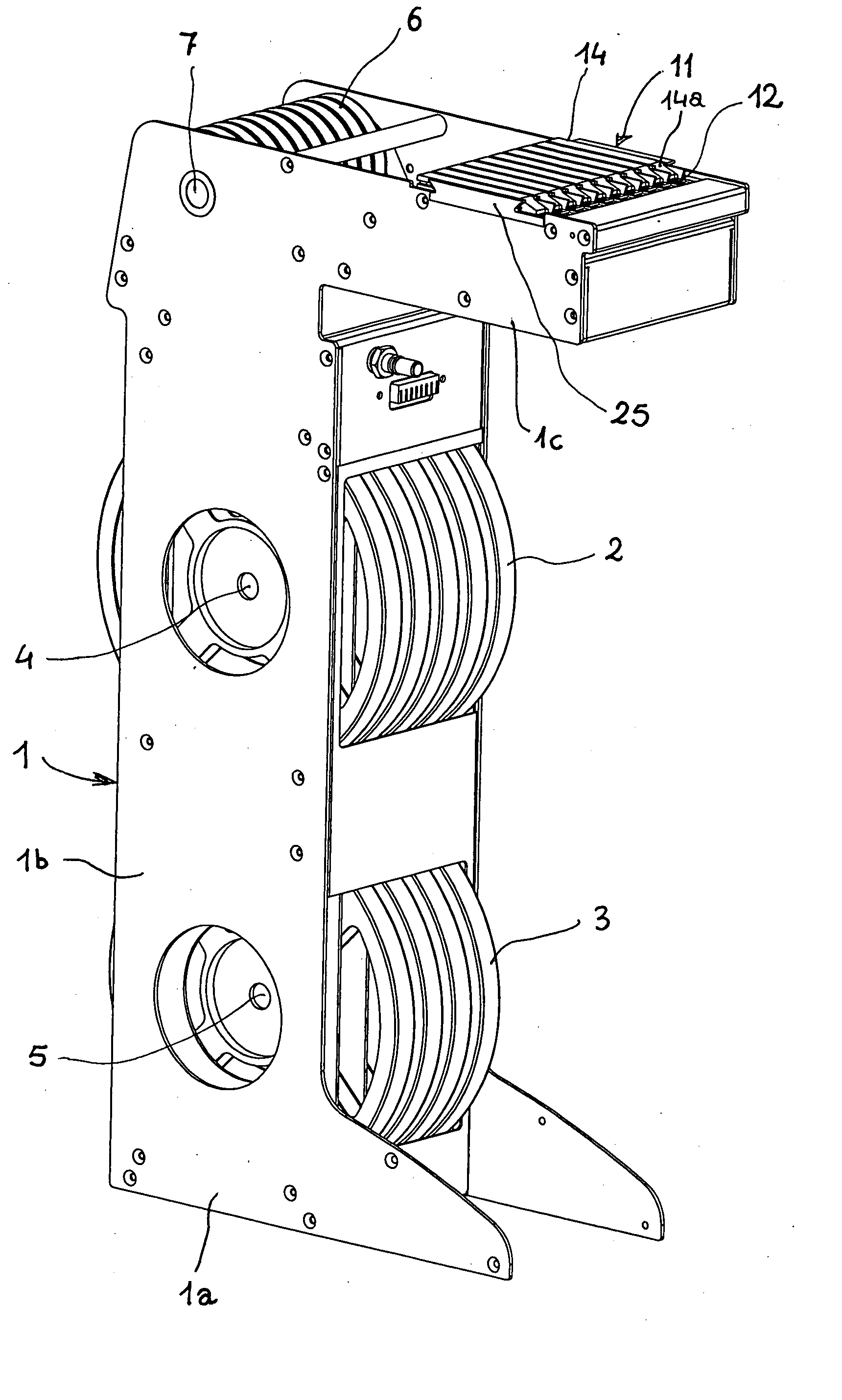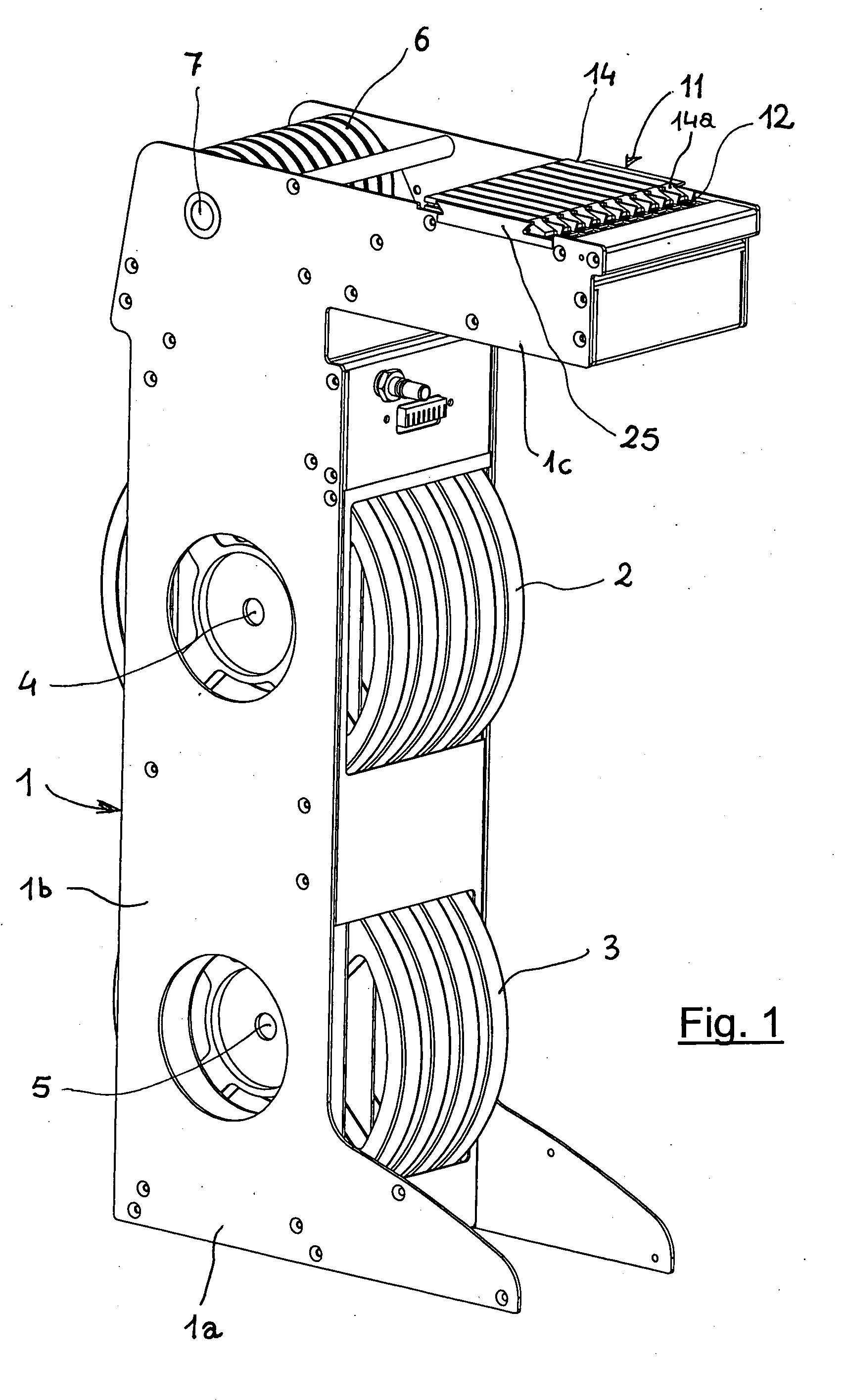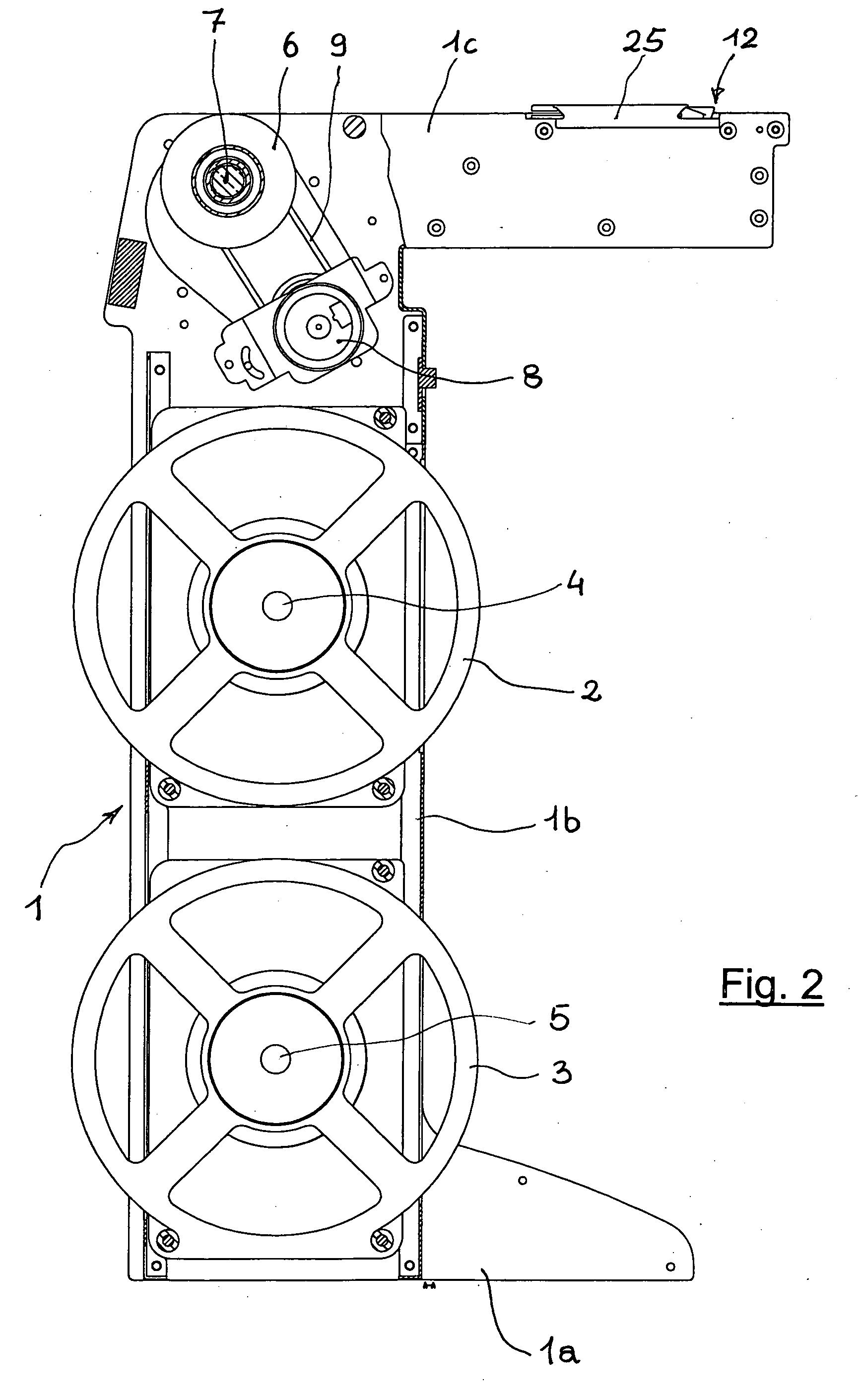Linear multiple feeder for automatic surface-mounting device positioning apparatuses
- Summary
- Abstract
- Description
- Claims
- Application Information
AI Technical Summary
Benefits of technology
Problems solved by technology
Method used
Image
Examples
Embodiment Construction
[0022] Referring now to the drawings and, more particularly, to FIGS. 1-6, there is shown generally a specific, illustrative linear multiple feeder for automatic surface-mounting device (SMD) positioning machines, according to various aspects of the present invention. In one embodiment, illustrated in FIGS. 1-3, the feeder has a relatively rigid, box-like frame comprising a base portion la, an upright portion 1b rising from the base portion, and a top portion 1c extending generally horizontally from a free end of the upright portion. Inside upright portion 1b, reels 2, 3 are desirably mounted revolvingly on respective spindles 4, 5 supported on either side, preferably at two different heights, by the upright portion. It is preferred that the reels be staggered relatively vertically so as to avoid any interference between tape(s) containing the SMD being unwound therefrom. At an upper end of upright portion 1b, generally at the same height as top portion 1c, a shaft 7 is provided on ...
PUM
| Property | Measurement | Unit |
|---|---|---|
| Force | aaaaa | aaaaa |
| Tension | aaaaa | aaaaa |
| Tensile stress | aaaaa | aaaaa |
Abstract
Description
Claims
Application Information
 Login to View More
Login to View More - R&D
- Intellectual Property
- Life Sciences
- Materials
- Tech Scout
- Unparalleled Data Quality
- Higher Quality Content
- 60% Fewer Hallucinations
Browse by: Latest US Patents, China's latest patents, Technical Efficacy Thesaurus, Application Domain, Technology Topic, Popular Technical Reports.
© 2025 PatSnap. All rights reserved.Legal|Privacy policy|Modern Slavery Act Transparency Statement|Sitemap|About US| Contact US: help@patsnap.com



